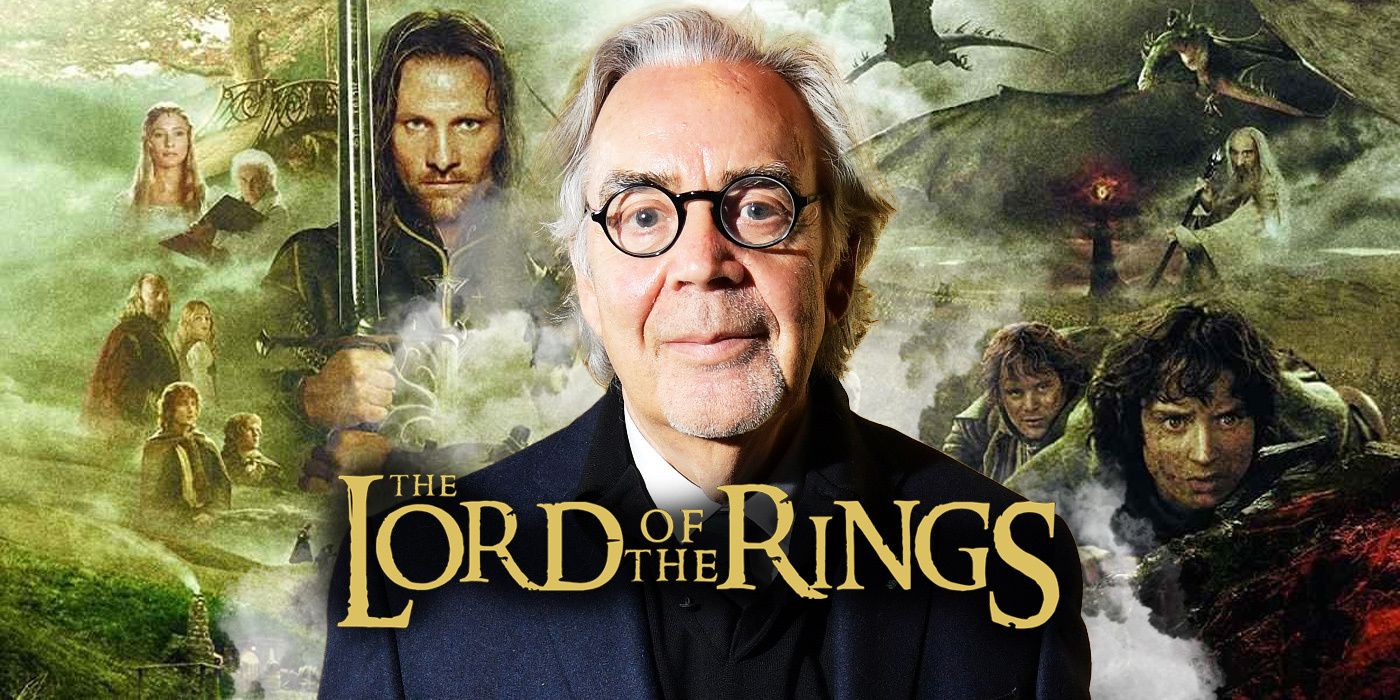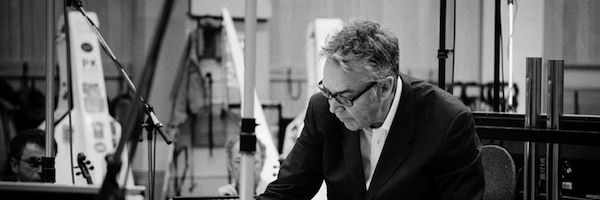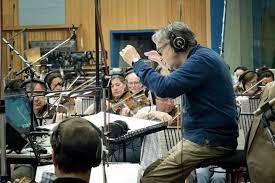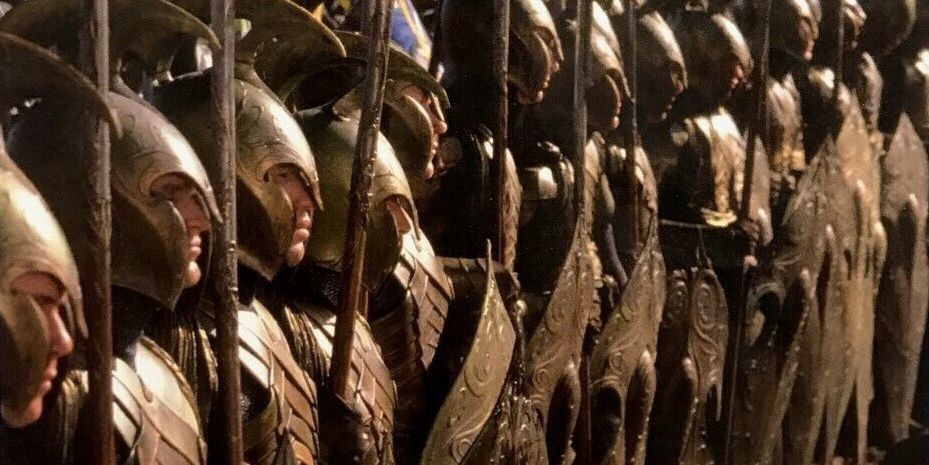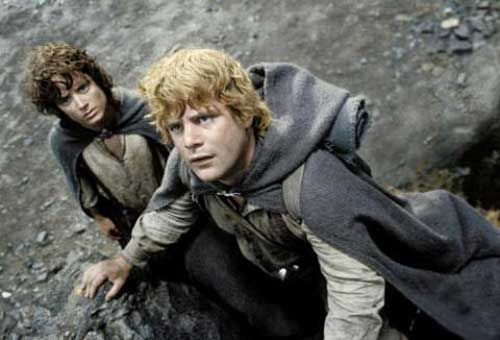A black screen and an eerie, mesmerizing Elvish chant is all it took to change the world of cinema forever. In 2001, The Lord of the Rings, directed by Peter Jackson, was introduced on the silver screen. J.R.R. Tolkien’s world is as complex as it is breathtaking. It gathers hundreds of characters, landscapes and languages, but what many call a masterpiece wouldn’t be what it is without Canadian music composer Howard Shore. Shore’s music for The Lord of the Rings swooped the most prestigious awards, including three Academy Awards, two Golden Globes and four Grammy Awards. Just like the Jackson’s trilogy got its extended version after the theatrical release, Shore’s complete version of the soundtracks was also released a few years ago. The duration of the complete version of The Return of the King album is 3 hours and 49 minutes, as opposed to 1 hour and 12 minutes for the first version, which proves the magnitude of Shore’s work.
Shore’s soundtrack is the first glimpse we get of Middle-Earth at the very beginning of The Fellowship of the Ring. The prologue opens with the score One Ring To Rule Them All. The chorus interprets the theme of the Elves of Lothlórien as Galadriel starts narrating the story of the Ring. To create this mystical and somber score, Shore used a sarangi, a ney flute and a monochord. Combined with the chant in Quenya, it resulted in the perfect sound for the Lothlórien.
So how did he create such a special work of art? The composer used the technique of leitmotif, which is when musical themes are associated with specific characters, places, objects or actions in a movie or series. In an interview to Ludwig Van in 2021, the composer stated, ‘’The use of the themes and the leitmotifs were used for clarity in storytelling. Tolkien’s world is considered to be one of the most complex fantasy worlds ever created (…) Not everybody who sees the films may have read the books and have understood all the different characters, cultures and objects. The music was used to help clarify this complex story.’’
Shore’s mission with this soundtrack was to inform people. Indeed, he had the difficult task to recreate the same elaborate story Tolkien had started telling some 86 years before. The music had to explain this world to people who didn’t know Tolkien’s work, and it also had to satiate the appetite of Middle-Earth’s fans.
One of the most recurrent themes of the trilogy is Concerning Hobbits. When we first hear it, we are brought into the green and idyllic lands of the Shire. In order to create the motif that will represent the charming and warm hobbits, Shore used instruments such as the mandolin, the Celtic harp and the tin whistle. By doing so, he composed the famous folkloric, peaceful and bubbly theme we all know. This leitmotif is extremely important in the trilogy. It is repeated in situations where the darkness seem closer than ever. At the end of The Two Towers, Sam’s monologue ‘’Even darkness must pass’’ is accompanied by a nostalgic, melancholic and slow reprisal of Concerning Hobbits. Just as he says, "There is some good in this world Mr. Frodo and it’s worth fighting for," the score reinforces the sentiment of hope as it reminds the viewer of the Shire.
We can also hear it in The Ring Goes South, when the fellowship leaves Rivendell: the brass picks up the Concerning Hobbits theme and gives it a more noble side, until it finally turns into the iconic score of the fellowship. This score perfectly represents the innocent hobbits, forced to leave their home in order to complete this major quest.
The Ring is the reason behind the fellowship’s mission. Its existence leads our favorite characters on a perilous mission to Mordor. The Ring corrupts, deceives. Its shadow looms over Middle-Earth. Its motif had to represent its dangerous beauty. The violin acts just like the Ring: it worms its way into our heads. It’s addicting and tempting.
To describe the Uruk-hai and Isengard, Shore selected sounds and instruments that could be associated with a world of industrialization. Their leitmotif had to be menacing, scary and shocking. Shore created a piece in six heavy and rhythmic notes to accompany the enemy. These notes are mainly composed of Japanese Taiko drums, blacksmith anvils and metal chains.
For A Knife in the Dark and Flight to the Ford, the Nazgûl are described by a somber and harrowing theme with the use of a strong chant and brass. Though they also are the enemy, their score differs from the Uruk-hai’s. Indeed, as we mentioned before, the Uruk-hai have been ‘’manufactured’’ in Isengard, they are inferior to the Nazgûl. These latter, on the other hand, were ’’great Kings of men’’ as explained by Aragorn. Therefore, their power and danger is represented by an intense choir in a crescendo theme song.
The Battle of the Pelennor Fields is considered to be one of the best battle scenes in cinema history. And once again, Shore played a huge part in the success of this epic moment. As King Théoden gives a stirring speech to his men before the charge, the theme of the Rohan is slowly increasing, with more and more brass and percussion. The Rohirrim charge grows with the music and reaches a peak until their swords meet the armor of their adversaries.
The Lord of the Rings soundtrack is also backed up by many songs and choirs. The composer collaborated with many vocalists, such as Aivale Cole, whose voice became symbolic of the heartrending scene of Gandalf’s fall from the bridge of Khazad-dûm during his fight with the Balrog. Ben Del Maestro, a young soprano, also contributed to the iconic themes of Forth Eorlingas and The Last March of the Ents. His angelic voice brings emotion and even more depth to these crucial and epic scenes.
In The Return of the King, Renée Flemming is one of the principal vocalists to join Shore. The Grace of Undómiel is played during Arwen’s vision in which she sees a child with Aragorn and realizes that this future is still a possibility. Flemming’s clear and pure voice perfected this scene.
At the end of the third film, when the eagles rescue Frodo and Sam, we hear Flemming’s voice who, once again, appears like a bright light in the shadows.
The song Into the West, interpreted by Annie Lennox was written by Howard Shore, Fran Walsh and Annie Lenox. This song was awarded a Grammy as well as an Oscar. Played in the credits of The Return of the King, the instrumental of Into the West can be heard in the track The Eagles and in The Journey to the Grey Havens. It is a melancholic piece that appears when despair welcomes hope and marks the end of this journey.
Shore’s music is entirely part of The Lord of the Rings. It is so recognizable that even if we hear it by chance on the radio, we are automatically brought back to a precise moment, to a specific character, or even to one single sentence.
Shore was able to translate Tolkien’s writings in a music score. He used the different languages created by Tolkien, and he incorporated them in his themes. He also makes characters interpret songs and poems from Tolkien’s work. Aragorn’s song during his coronation or Eowyn’s lament at Théodred’s funeral prove the music isn’t just there to beautify the story. It is the story. That’s probably why Shore’s work is so singular. Yes, there are hundreds, thousands of wonderful and iconic soundtracks out there. However, Tolkien’s The Lord of the Rings isn’t just a tale of fantasy. It is a whole wide world where every tree, every detail, every place has a meaning and a story. Every character has ancestors. And these ancestors also have ancestors. It is such a complex story that it seems endless.
Using this logic, Shore’s music isn’t just a great score. It is also a whole wide world that uses many languages, dialects but also some of the rarest musical instruments. Shore wanted the soundtrack of The Lord of the Rings to feel ancient, like it had just been discovered with the story itself. And that’s what he did. These movies can’t be dissociated from the music and the music can’t be dissociated from the movies. Even the books are now impossible to separate from this score.They’re bound to each other. It was an incredible feat for Shore to be able to have such an impact on a piece of work that was created decades before.
With the upcoming release of The Lord of the Rings: The Rings of Power on Amazon Prime Video in September, fans aren’t just expecting to return to Middle-Earth. They want to hear Middle-Earth. And, with Shore confirmed to return to Middle Earth, we're sure to hear more haunting melodies that will become an indelible part of The Lord of the Rings vernacular.

